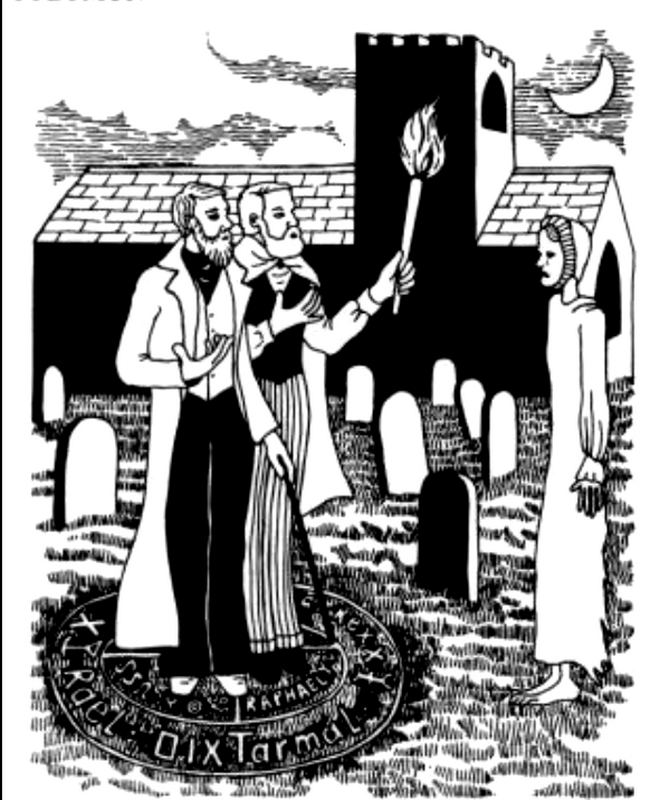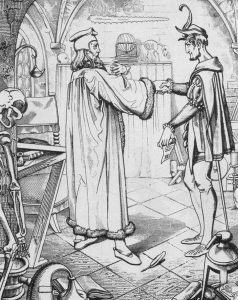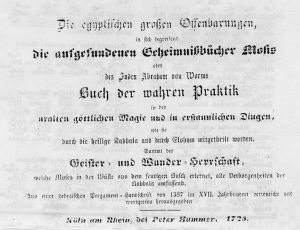Under normal circumstances the dead do not return as ghosts. If they do there must be a special reason. It follows that if a living person desires to establish communication with the dead on his own terms, in other words, to summon a spirit from his last resting place in defiance of his wishes, it is necessary to institute the most elaborate precautions that magick provides as insurance against becoming the victim of the ghosts righteous anger. Moreover there is always the possibility that the summoned ghost is nothing other than a demon in disguise.
Churchyard necromancy, a specialized branch of the art, requires a special technique.
As the hour of midnight struck, the magician, having undertaken the preliminary rites, intones in a sepulchral voice:
“The dead rise and come to me!”
Then he advances into the churchyard scattering graveyard earth about him. In summoning the dead from the tomb he cries:
“Ego sum te peto et uidere queo!”
To dismiss the dead he commands:
“Return to the Kingdom of the Chosen!”
Some occultists are of the opinion that the magician, in calling upon the spirits of the dead, in reality summons not the ghost but the astral corpse.
Necromancy

Necromancy was practised by John Dee and Edward Kelley. There is an old print depicting Dr John Dee’s assistant, Edward Kelley, standing in a churchyard, holding a magic wand and reading from a book of spells, while his assistant illuminates the macabre midnight scene with a flaming torch. In the light can be seen a newly-resurrected corpse rigid in its shroud. The two sorcerers have taken the precaution of placing themselves at the centre of a magic circle, inscribed with the names of certain protective angels “Raphael, Rael, Miraton, Tarmiel and Rex”.
In the middle age necormancy prospered

The use of corpses as ingredients of charms and philtres is closely associated with necromancy, and is one of the best known techniques of witchcraft. Death by violence, or any premature termination of life, enhances the magical value of human flesh, since it can then be assumed to contain some element of unconsumed vitality within it.
In the early 16th century was written: “Some take a small piece of buried corpse, especially the corpse of anyone who has been hanged or otherwise suffered a shameful death . . . the nails or teeth . . . the hair, ears or eyes . . . sinews bones or flesh.” The demand for simile ghoulish remains, particularly the flesh of unbaptized babies, was responsible for many graves being rifled. Among the bestknown cases involving human flesh in magic was that of the Irish witch, Alice Kytetfy, who was accused of using the hair of a corpse and the skull of a thief in one of her formulas. A moss that grew on the skull of a hanged man was always in considerable demand.
To declare that necromancy of the old type is quite dead would perhaps be premature. Innumerable churchyard desecrations still take place.




